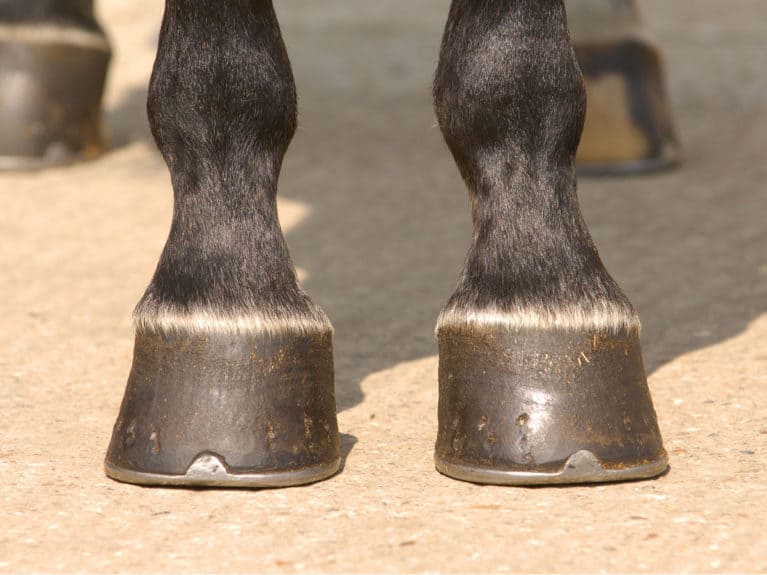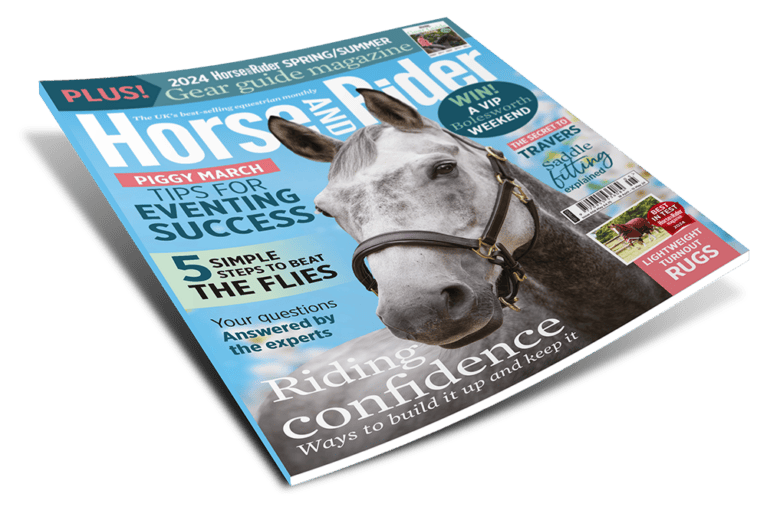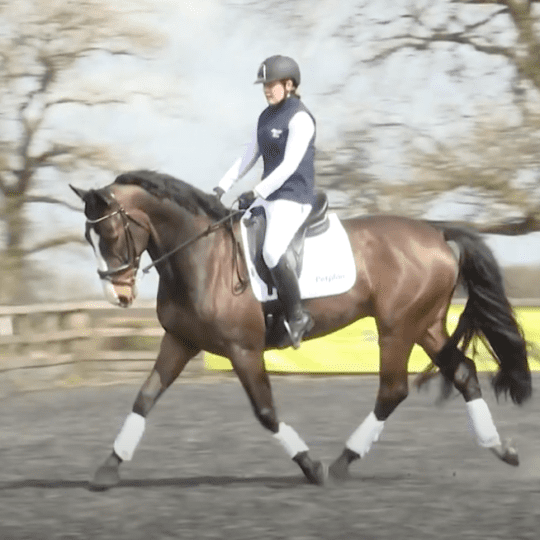Featured Professional
If you’re looking to buy a new horse, finding the perfect partner is essential. Vet Laura Quiney, from the Animal Health Trust, explains how to make sure he’s fit for the job

Buying a horse involves a significant time and financial commitment, and can be a complete minefield. With every type of horse imaginable on the market, where do you start looking? And how do you know whether you’ve found a good one? Choosing the right horse is important for a happy, successful partnership and there are a few key things to consider before you start shopping…
- he must be suitable for your height and weight
- what temperament would suit you? If you can be nervous, you’ll want a horse who’s quiet to ride and easy to handle
- what activities do you want to do? For example, if you’re keen to event you’ll want a sport horse type rather than a heavier breed
- think carefully, and honestly, about your level of experience – being overhorsed isn’t a great deal of fun and can be dangerous
Did you know? All horses have the same number of vertebrae regardless of the length of their back.
The importance of good conformation
Once you’ve found a horse who ticks all the boxes, the next most important step is to assess his conformation – his outward appearance, which is influenced by the size, shape and position of his bones, muscles and other soft tissues. Conformation is thought to influence a horse’s performance and soundness, so it’s certainly worth taking into consideration before you agree to buy him. A horse with good conformation is considered to be in proportion and well-balanced.
Conformation for performance
The ideal conformation for performance depends on what discipline and level your horse will be worked at. However, the majority of information that exists is based on opinion and there’s little scientific evidence to back it up. The key areas of the body to assess include…
shoulders For jumping and dressage, a sloping shoulder is considered to be a desirable trait. It’s been shown that horses with more sloping shoulders have a longer stride length at walk compared to those with more upright shoulders. In another study comparing elite and lower level dressage and showjumping horses, the elite horses’ shoulders tended to be more sloping
neck Dressage horses have relatively short necks, perhaps making it easier to achieve an uphill and correct outline, whereas showjumpers have longer necks, which may help to produce a good shape over the fences
croup A horse with a croup that’s higher than his withers is naturally downhill, and may struggle to engage his hindlimbs and sit behind. A croup that’s the same height as his withers is generally considered the norm. Some horses have a croup that’s lower than the withers and they’re naturally uphill and lighter on their forehand, which are desirable traits in dressage horses

Top-performing horses aren’t necessarily those with perfect conformation. Although some studies have identified certain conformational traits that are more likely to be seen in elite horses than lower level competition horses, the differences are usually slight and most researchers agree that conformation alone doesn’t appear to be a reliable predictor of performance success.
Conformation for soundness
Conformation undoubtedly affects how a horse moves and how forces are placed upon different structures in the body and, although there’s relatively little scientific evidence, it may affect the risk of injury. Lameness is a common problem in horses of all disciplines, at all levels of competition, and a recent study showed that as many as 46% of horses in full work, who are considered to be sound by their riders, actually have clinical signs of lameness or pain. Although there are many potential contributors that determine the risk of injury, several common injuries seen in sport horses appear to be associated with certain conformational traits…
injury to the top portion of the hindlimb suspensory ligaments
This is one of the most common injuries seen in sport horses and usually affects both hindlimbs. Straight hock conformation, with or without dropped fetlock joints, has been identified as a risk factor and horses with straight hocks are also more difficult to treat. Surgical treatment has the highest success rate, however, there’s a higher risk of surgical failure and progressive worsening of the injury in horses with straight hocks.
General suspensory ligament injury
Horses with dropped fetlocks when standing or fetlocks that drop excessively when walking are at a higher risk of injury due to the increased load through the suspensory ligament. Horses with an existing suspensory ligament injury may have dropped fetlocks as a result of the ligament stretching.
Sacroiliac joint region pain
A horse whose croup is higher than his wither appears to be at greater risk of pain in this area, which is a common cause of poor performance.
Kissing spines
Horses with a short or dipped back naturally have close or crowded spinous processes (bony protuberances found on the top of each thoracic vertebra), which can develop into kissing spines, where the spinous processes touch.
Interference injuries
Horses with toe-out conformation may suffer with this type of injury because the forelimbs tend to swing inward and may catch the opposite leg.
Foot pain
There are several factors that put horses at higher risk of foot pain, such as…
- a non-matching pair of front feet
- croup-high horses are naturally more downhill, so they carry more weight on their forelimbs. Although not yet proven, increased weight on the front feet may be a risk factor for foot pain
- long toes and low heels, which puts greater forces through the structures at the back of the foot and may cause strain on the laminae
- small front feet relative to body weight, presumably due to greater forces being spread over a smaller area
- toe-in or toe-out conformation, because it causes asymmetrical loading and stress on the feet, which may lead to injury such as a sprain of the collateral ligament of the coffin joint
Did you know? A farrier can improve upon poorly balanced or misshapen feet through trimming and balancing.

Muscled up?
With the horse standing squarely on an even surface, carefully look at the symmetry of his muscles. They should be even on both sides and the overall development of his muscle groups should reflect his current workload. For example, a mature horse in full work should have good, even muscle development. Poorly developed hindquarters in a mature horse in full work may indicate that he’s not pushing well from behind, possibly due to an underlying problem. Similarly, poor back musculature may reflect that he’s not been working correctly, perhaps due to discomfort. Poor development of the hindquarter muscles on one side may indicate an ongoing hindlimb lameness.
Did you know? Horses with short backs are thought to be better weight carriers than those with long backs, which are thought to be weaker.
On the move
It’s important to see the horse move in-hand, on the lunge and under saddle after you’ve assessed his conformation. This will enable you to see if and how any conformational defects affect his movement, and if there are any signs of lameness or pain.
Did you know? Horses with ongoing forelimb lameness may develop a narrow, upright foot, presumably because less weight is put on it, so an upright or boxy foot may indicate previous or current lameness.
Seek expert advice
Both performance and risk of injury are influenced by many different factors and conformation alone can’t be used to predict either. A horse with completely perfect conformation doesn’t exist, so you’ll need to be realistic when assessing your new horse. Bear in mind that moderate to extreme deviations from normal conformation are more likely to impact performance and soundness than mild ones.
There’s much to consider when looking at a new horse, so it’s wise to ask your vet to perform a pre-purchase vetting. They’ll carefully assess the horse’s soundness and conformation, and the findings will enable them to advise you on the likelihood of the horse remaining sound for the job you’d like him to do.
















